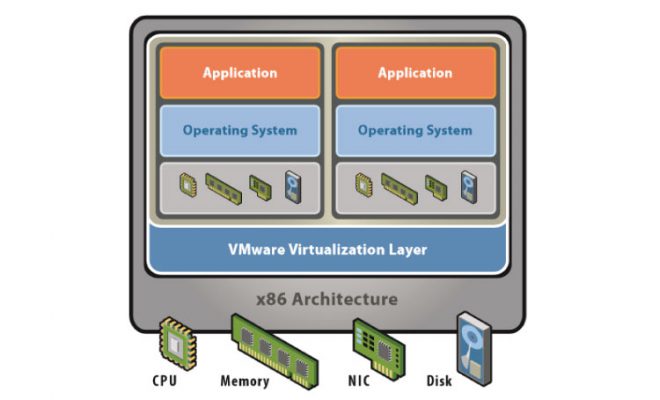Technology innovation using Virtualisation and Virtual Machine

With the advent of ubiquitous virtualization technology, we are now able to lease hardware and computing power from vendors with some reasonable price. We no longer have to procure physical hardware nor application software in order to run our business. All of these conjuring tricks were done by a humble yet powerful tool called ‘Hypervisor’. Hypervisor allows us to build and manage Virtual Machines virtually. In other words, you have the flexibility to scale your company whenever you want since you have the required virtual resources at your disposal, such as networking, security, and processors and more. Therefore, you will not have to possess the hardware and software required to run a specific operating system.
Virtualisation in a Nutshell
In a nutshell, virtualisation refers to the interfaces of physical infrastructures (or hardware) with the operating system of the system. In the old days, Operating System lies on top of the hardware. Therefore, if there is a malfunction in the hardware, the whole system will break down; and the Operating System will stop running.
With the advent of hypervisors, we are now able to run multiple virtual machines on top of our hardware efficiently. These operating systems and applications are independent of the hardware. Now, the Operating System is tied to the hypervisor in lieu of the hardware itself. When the servers’ hardware fail, one only needs to move the instance of the Operating System to the other instance of hardware. All of these moving can be done automatically with some additional charge.
Virtualisation Benefits:
- Hardware resources like CPU, Memory, Storage and network can be pooled and shared.
- Create various IT Services such as Infra as a service, Software as a service and Platform as a service
- Can manage Operating System (OS) and application as a single unit by encapsulating them into virtual machines.
What is a Virtual Machine?
A virtual machine is an emulation of a computer system that can be implemented on top of the usual operating system by software emulation and hardware virtualisation. It can also be referred to as a “software computer” because it runs an operating system and applications like a physical computer does.
Solution to challenges faced by IT Professionals
- Server availability – VMs are able to ensure high availability (HA) of applications and data. For example, if one of the servers fails, another virtual machine can be replaced instantaneously with minimal data loss and damage.
- Enterprise desktop – Multiple operating system environments can exist concurrently on the same machine. User can install more than one guest operating systems on top of the host operating system. For instance, user can install Linux OS, Mac OS, Windows OS, and different version of those operating system (Windows 10, Windows 8, Windows 7, etc.) in one physical machine.
Lastly, virtualisation and virtual machines provides highly cost effective solutions by reducing the physical computer consumption in organisation. Available at lower cost and easily accessible. The future of technology innovation is realised by leveraging the use of virtualisation and virtual machines.










